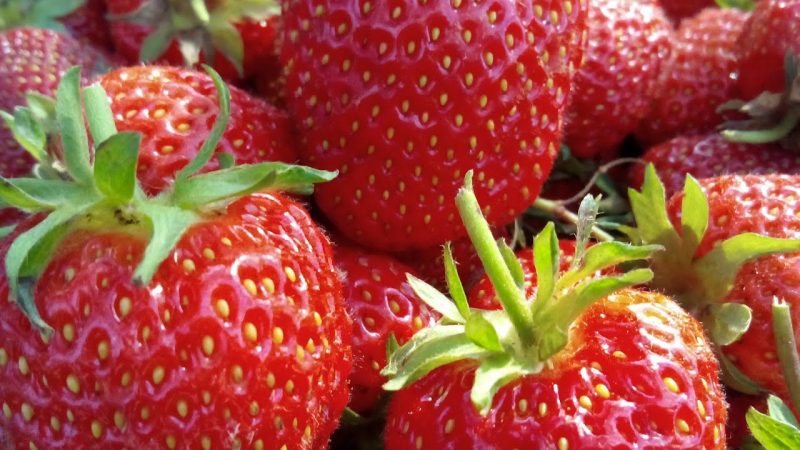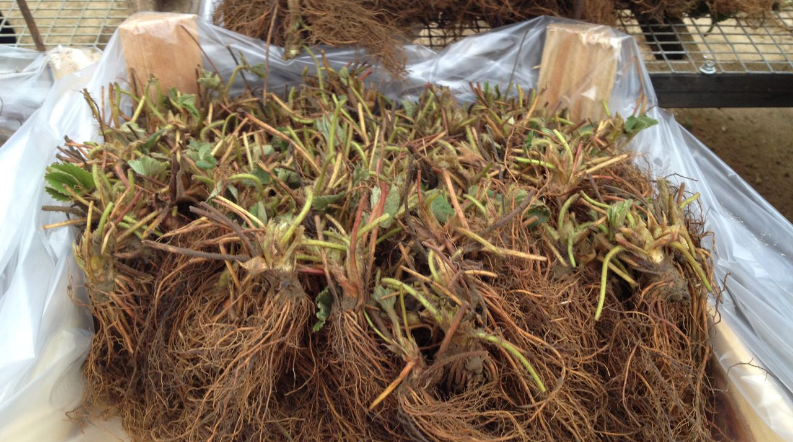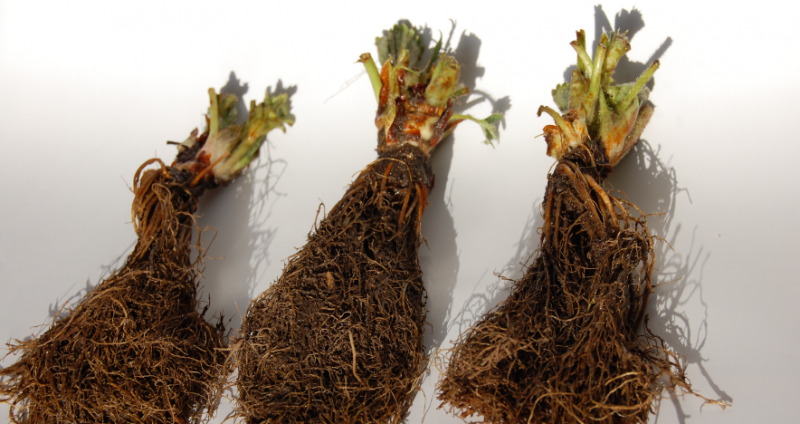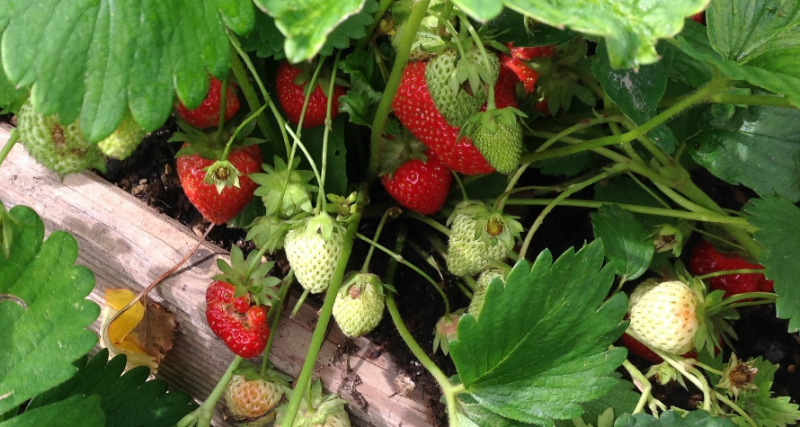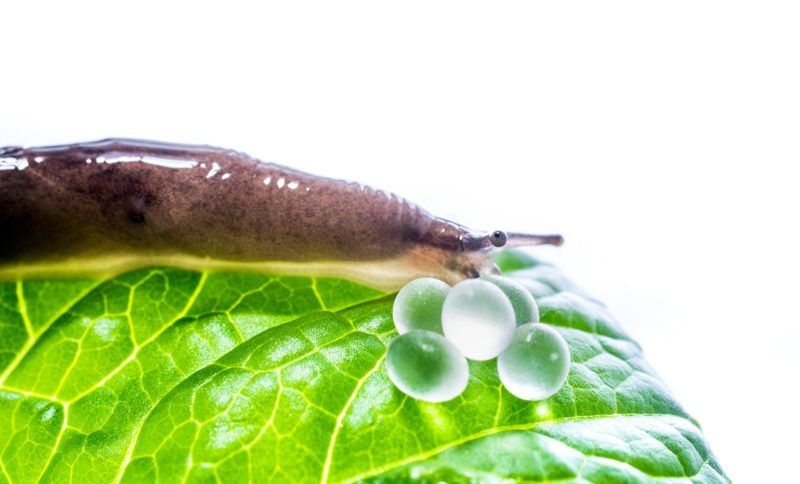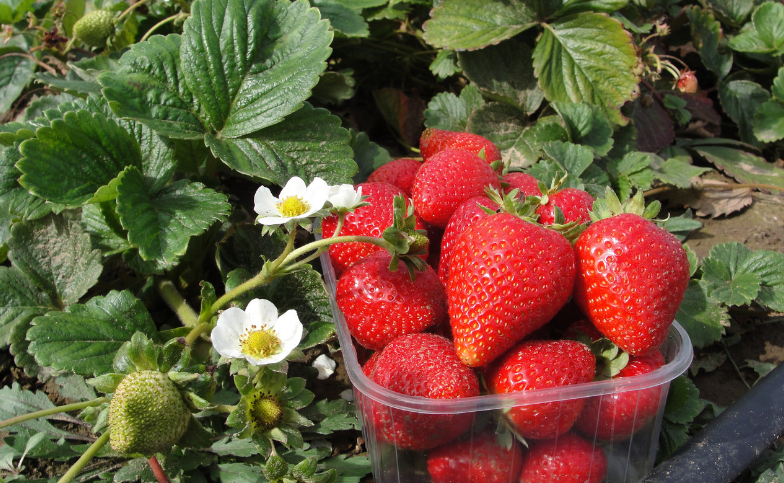Frigo strawberries are called the modern method of growing berries. This method consists in placing the berry in the refrigerator compartment and planting it in a greenhouse or open ground at different times of the year. The technique allows you to harvest at the desired time.
Material Content:
Frigo Strawberry Variety Description
4 groups of Frigo strawberries are distinguished, depending on the diameter of the cut of the seedling neck.
- The smallest cut in class B plants is only 8 mm. These varieties will not yield a large crop from the first season. This class is used to get berries in subsequent seasons.
- Class A is distinguished by a cut already in 12 mm, and the seedling can have two peduncles. There is also a grade A +, which has three peduncles and a slice of about 15 - 18 mm.
- However, the most popular class is WB with a diameter of 20 mm and five peduncles. These varieties allow you to collect from one hectare up to 20 tons of berries.
Harvesting seedlings for growing
Frigo strawberry seedlings are taken from the uterine bushes, which must first be planted in the ground. To do this, choose the highest yielding varieties of garden strawberries, such as, for example, “Alba”.
The algorithm of the work:
- Sockets are planted only in sandy soil.
- When peduncles appear, they are completely cut off.Frigo's method is to make the bush accumulate nutrients.
- During the growing season, the berry must be fed.
- By autumn, plants enter a dormant period. When the leaves turn brown, the bushes are dug up for storage.
- After digging, the roots are thoroughly shaken from the soil and transferred to a cool room.
- On the bushes, all leaves are cut off, except those that grow in the heart.
- The material is treated with Hom or Fundazol to prevent the development of rot.
- Next, the seedlings are sorted into classes and put into storage.
Prepared in this way sockets of 50 - 100 pieces are placed in plastic bags with a thickness of at least 0.45 mm. You can not use a film of a greater thickness, otherwise the strawberry may die.
The optimum temperature for proper storage of seedlings is +1.5 degrees. Perhaps a deviation of 0.5 degrees in one direction or another, but no more. The fact is that in heat the seedlings can wake up, and when the temperature drops, it can simply freeze.
The duration of storage of strawberries is up to 9 months. You can store seedlings in the refrigerator.
Technology of planting plants in the ground
The soil for planting outlets should begin to prepare in the fall. For this, the site is dug up on a bayonet and at the same time organic matter is introduced. Many gardeners sow green manure in the fall, and in the spring they dig the land. This is especially true for depleted soil.
Planting frigo strawberries is recommended in May - June, although the timing depends on the climatic characteristics of the region.
The second landing is made after two months. For seedlings, it is advisable to use high beds. Planting material is planted in the evening. The land must be shed well.
Planting Strawberry Frigo step by step:
- Seedlings are taken out of the refrigerator and gradually awakened. For this, sockets are placed in containers with warm water and sprayed. In no case should strawberries be subjected to a sharp change in temperature.
- Once the sockets are thawed, they are transferred to cold water with the addition of a growth stimulator for a couple of hours.
- The root system is trimmed 10 cm before planting.
- Immediately seedlings are planted in the ground.
- The step between the outlets is 20 cm, if the landing is ordinary, then 30 cm is left in the row.
- The roots of the sockets are straightened, the heart is planted just above the ground level.
- Planted bushes are shed and mulched with black agrofibre.
Strawberries are irrigated daily for 10 days. Then one watering in 5 days is enough.
Frigo strawberry care rules and methods of propagation
Caring for Strawberries Frigo is quite simple.
Strawberries grown according to Dutch Frigo technology must be fed with nitrogen fertilizers.
Twice during the growing season, nitrogen fertilizers are applied in liquid form, diluting 15 g of urea in 10 l of water. Fertilizers are poured under the root, trying to prevent moisture from falling on the leaves, as this can cause the development of fungal diseases.
- Water strawberries immediately after picking berries, even if it rained. The plantation should be kept moist.
- It is very important to regularly combat weeds. Weeds not only remove nutrients from the soil, but also contribute to the emergence of insect pests and diseases, which significantly reduces productivity.
- If you mulch a plantation, it will greatly facilitate care. Suitable straw or agrofiber.
Strawberries according to Dutch technology Frigo can be propagated in the traditional way - a mustache. To do this, leave up to 5 mustaches on the strongest outlets, and cut the rest. On the selected mustache, young bushes of only the first row are left. In the fall, such young outlets can be put away for storage, and in the spring they can be dropped off.
Pest and Disease Control
Strawberry plantations using Frigo technology must be kept moist at all times. This causes mildew and mildew on rosettes. To prevent this from happening, you should not thicken the plantings, and at the first signs of the disease immediately treat the plants with fungicides.
Of the parasite insects, aphids, ticks, and slugs most often attack strawberries. Insects can cause bushes to die if measures are not taken in time. For preventive purposes, rosettes are sprayed with insecticides before flowering. If insects still attack the plantation, then the heavily affected bushes will have to be dug up and burned, and the rest - treated with insecticides, strictly following the instructions for the drug.
Harvesting and Aftercare
The fruits are harvested every day, preventing their overriding. When the last berries are harvested, planting can be eliminated.
If the plantation remains for the next season, then you need to remove the mulch, weed the site and apply fertilizer. Usually fed with potassium sulfate, spending 300 g of the drug per hundred parts.
After fruiting, preparing the bushes for winter, they are covered with non-woven material. You can use a perforated film. Many gardeners mulch the beds with fallen leaves to preserve their roots during the cold. But, if you do not remove leaves or other organic matter from the beds in time in the spring, then the earth will warm up very slowly. As a result, the onset of fruiting may shift by a couple of weeks.
Dutch technology Frigo allows you to harvest record crops from a small plot of land. Having mastered this technique once, many gardeners completely switch to it, growing strawberries.


